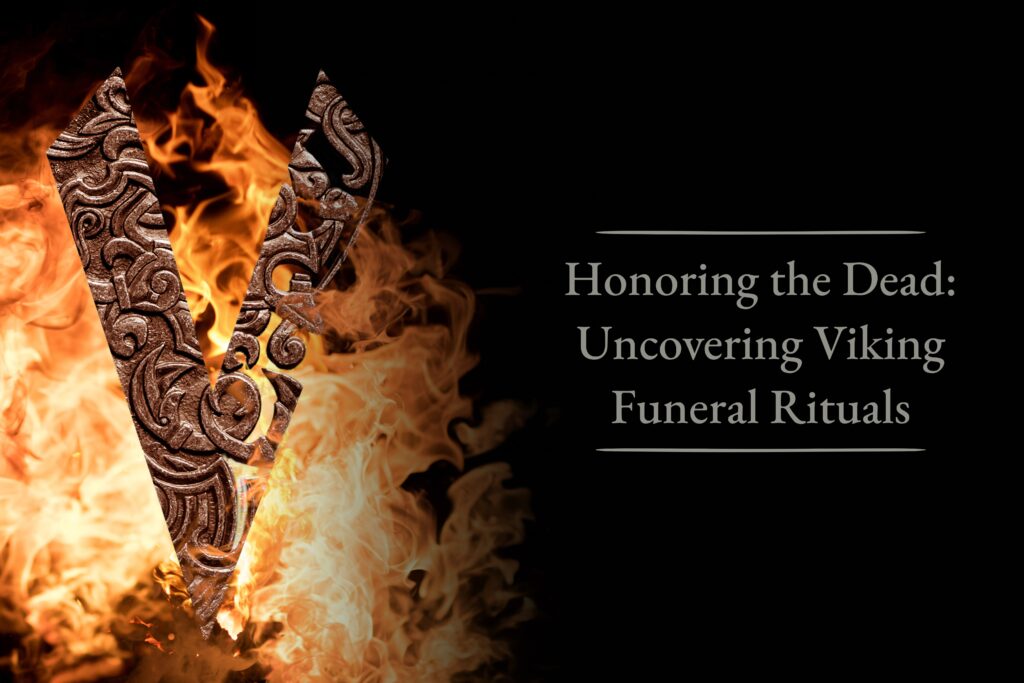Blog
Honoring The Dead: Uncovering Viking Funeral Rituals
Most people know little about Viking burial rituals, and what is known is often shrouded in mystery. In this blog post, we will explore some of the more obscure aspects of Viking funerals, including their traditions surrounding death. We’ll discuss burial customs, the role of the funeral pyre, and the significance of Viking burial traditions meals. By understanding these traditions, you’ll better understand why Viking burials are so enigmatic and fascinating today. So this blog is worth reading whether you’re a Viking fan or just curious about their culture.
What do Vikings do when someone dies?
Viking culture was a Nomadic lifestyle that flourished in Northern Europe from the late 8th century to the mid11th century. During this time, they were known for their many raids and conquests and impressive seafaring skills. One of the most important aspects of Viking culture was their funeral traditions, particularly cremation (often upon a funeral pyre) or burial.
When someone died in the Viking Age, it was customary for their body to be cremated or burned on a funeral pyre. This practice was seen as an honor and a way to ensure that the deceased’s soul would be able to find peace after death. Cremation allowed families to take possession of the deceased’s remains and keep them close, while burial allowed easier access to the dead person’s spirit.
Viking cemeteries were often located near settlements, so people could visit them regularly and pray for protection and blessings for their loved ones. While both cremation and burial were used during this period, there is evidence that burial began becoming more common around 800 AD due to religious reasons.
What are the practices associated with a Viking funeral?
A Viking funeral was a significant event in the life of a Scandinavian warrior. It marked the end of his life and served as an opportunity to mourn and celebrate his life with his friends and family.
The deceased were typically buried with their possessions during a Viking funeral. These possessions may have included weapons, jewelry, and other valuable items. The purpose of this burial practice was twofold: to protect the deceased’s belongings from robbers or invaders after death and to provide them with an afterlife in which they could continue to enjoy these items.
Viking funerals were often elaborate ceremonies involving prayers and gods’ offerings. After the body had been cremated or buried, friends and family would come together for a feast in honor of the dead person. This event served as a celebration of life and an opportunity to mourn lost loved ones.
The food served at the feast after the funeral varied depending on the occasion but most likely included meat and fish dishes, bread, mead or ale, wine, dairy products, vegetables, and fruits. There might also be sweets such as wild honey. The Vikings believed feasting stimulated the soul after death so it could journey peacefully into Valhalla – their afterlife paradise.
How long is a Viking funeral?
There is no one answer to this question, as the length of a Viking funeral varied depending on the social status and wealth of the deceased. However, most burials took between two and four days and featured elaborate ceremonies with many participants. The body was often buried with weapons and other valuables to provide for the afterlife.
Some believe that Vikings believed in an indefinite life after death, so their funerals were meant to prepare their loved ones for a possible reunion after they died. Others theorize that Viking funerals were intended mostly as displays of power and wealth by the deceased’s family members. Whatever the reason may be, these elaborate rituals are fascinating examples of ancient Scandinavian culture.
Are Viking funerals legal in the U.S.?
Viking funerals are illegal everywhere in the U.S., but there are two places in Colorado where you can burn people’s remains outdoors. These ceremonies, which typically occur in Scandinavia, involve burning a boat or other vessel containing the deceased’s body and all of their possessions. The purpose is to release the person’s spirit into the open air so they may continue to live on after death. While this practice seems barbaric to some, it is believed by many adherents that it offers peace and protection from evil spirits.

